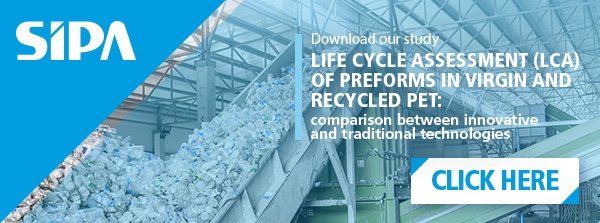PET bottle market trend: packaging lightweighting. Is a phenomenon that is increasingly involving companies, particularly in the food industry, in order to raise levels of environmental awareness and, more generally, of sustainability.
Good practice companies in terms of lightweighting
There are plenty of examples, all over the world, of sustainable companies that have already started packaging lightweighting even before the introduction of specific national and transnational legislation.
For example, San Pellegrino, a company operating worldwide in the field of soft drinks and mineral waters, has lightened packaging saving approximately 850,000 pounds of PET per year.
Also The Coca-Cola Company has lightweighted bottles saving approximately 650 tonnes of PET and loading onto trucks more stock of products so as to streamline logistics and, consequently, decrease charges.
Nokia has shrunken mobile phones packaging with more compact packages using 54% less material, which means 5,000 trucks saved along with hundreds of millions of euros.
Cost savings related to the PET packaging lightweighting
PET packaging lightweighting involves a small or large - as the case may be - cost savings in the entire supply chain.
It is a process of clear environmental merit; this makes this practice very popular in Food & Beverage.
Despite its popularity, however, lightening can become, in some cases, a risky approach. This happens when a produced packaging impairs the end-user experience.
READ ALSO: "Revolutionary injection molds for PET preform weight reduction"
PET packaging efficiency aspects
In the lightweighting process it is necessary to focus on a model that PricewaterhouseCoopers describes as “packing efficiency”.
According to this model, "packing efficiency" may be defined by a more holistic approach that spans the entire life of a package.
This model takes into account five specific areas: the resources used in the creation of the concerning packaging, its ability to protect the product, transport efficiency, efficiency of exposure, its end-of-use impact and, as a wider lens, its ability to provide a positive experience.
Examining the samples identified earlier (San Pellegrino, Coca Cola and Nokia), besides being lightening choices, those are also efficient solutions.
In fact, there are no compromise in any area, with the ability to carry more packages with the same container, having a greater number of packages on a shelf and design solutions always more engaging for consumers.
READ ALSO: "PET Packaging: alternative materials for virgin PET"
However, in other cases, the use of flexible packaging may not be the efficient solution because it compromises consumer experience.
For example, price and weight savings of these bags is up even when used for larger products, microwave-ready, such as shelf-life-extending soups.
The problem in this case is that packaging lightness, can result unstable and the contact with the hot product can cause serious burns to consumer.
A positive example provided by SIPA combining packaging lightweighting and efficiency
SIPA is certainly one of the leading companies in the production of PET packaging, one of the most involved in lightweighting process.
SIPA has taken up the challenge proposed by Mega Empack, in the Bepensa group which produces and distributes beverages as well as chemicals, different types of industrial and automotive equipment, logistics, and is a major supplier of bottles for The Coca-Cola Company.
For preforms, SIPA provided its own 3rd generation model XFORM 500/48, while packages are blown out of a SFL4-4XL. SIPA has developed five new lightweight bottles for Mega Empack.
SIPA was given the task of developing bottles that needed to withstand durability tests, carried out in the lab and also in real-life conditions, which ensure they can withstand multiple washing cycles, just like glass bottles.
Washing was carried out at up to 60°C in alkaline conditions of up to pH 14, for as long as half an hour each time. Lab tests involved putting the bottles through 25 cycles.
At the same time, Mega Empack wanted to use lighter bottles compared to previous version, already on the market. Since bottles are primarily used for carbonated soft drinks or sparkling water, they had to withstand internal pressures and cracking, also showing a good thermal stability.
Preforms were designed in two shapes, one of 93 g for 1.5 L bottles and another of 119 g for 2.0 and 2.5 L bottles to 119 g (SIPA and Mega Empack continue to work together for further lightweight for 2.0 L format).
Both shapes are characterized by low ovality and good concentricity and perpendicularity.
The preforms are blown into molds made of a special copper alloy into the base "champagne" bottle style-like, for improved cooling, while the body is heated to approx. 85° C, the base (and neck) are cooled to about 12° C.








